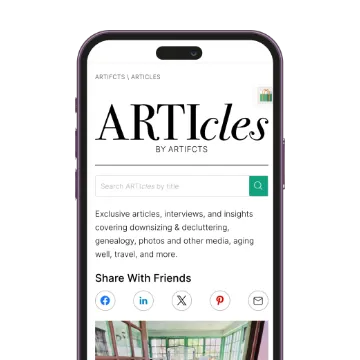Reading time: 3 minutes
Feeling pressured to tell your life stories?
Has a loved one given you a questionnaire or a book to write in about your life that feels like another to-do?
Does it contain absurdly challenging and broad questions like, "What's one of the most seminal moments of your life?"
Are you receiving tips on how to “express yourself” or make your stories “entertaining," "thoughtful," or "compelling" and don’t really know where to begin?
(Are you the one creating the pressure?! Keep reading. Today's article is also for you!)
The Story Burden: What Is It?
Maybe you're not a great writer, maybe you don't want to commit the time, or maybe you don't think you have good stories to tell. But "they" are asking you to write or record your stories anyway and maybe even throwing money at it via well-intentioned gifts to encourage you. That is what we call the "story burden."

We know the pressure comes from a heartfelt place. Our friends and family may think we and our stories are worth preserving and sharing. And the storytelling industry wants to help us structure our stories to capture people’s attention in an increasingly distracted world.
At the same time, these story pressures can snowball and become a giant turnoff. The well-intentioned tips, classes, and frameworks may backfire and prevent us from making progress. And progress, not perfection, is what matters, just as much as what “they” want. Right?
Name Your Own Story Goal
You can't get there, if you don't know where you're going. What is your goal in recording your stories, no matter the format you select? Perhaps your goal looks like one of these:
-
-
- Private, diary-like reflections that maybe you'll share one day with a chosen few.
- Recording bits of your personal and family history to share your knowledge with your loved ones.
- Capturing moments and memories that made you and others smile before the details slip away. Could make up the pieces to a great memoir one day!
No matter your goal, consider the strategies we've gathered below to see if any will help you make progress without that burden stories can create.
Time-Tested Story Capture Strategies
STORY PROMPT BOOKS AND CHECKLISTS
Lacking inspiration, a jumping off point? Download a free checklist of interview questions. A great question source is the independent non-profit StoryCorps (check out the podcast, too) and it's FREE collection of life story questions aross 17 categories. Or you could purchase a story prompt book like this one to work through at your pace. These resources will avoid set schedules and fixed costs so you don't have to worry if you fall out of sync with their pace or wonder if you're getting good value for your money. It's free or a one-time fee!
If you're motivated by, let's say, a treat now and then, you could even eat your way to stories. Our co-founder Ellen loves good old-fashion soft caramels and was shocked how game her family was to answer the questions wrapped around each of these caramels during the holidays. Talk about low pressure!
SUBSCRIPTION STORY SERVICES
Need more motivation? Subscription services like Storyworth and many others can send you regular prompts by email or have someone call you and by answering them in a timely fashion, by yearend, you’ll have enough fodder to complete and purchase your responses in a book format. For additional fees, you can even add color photos, additional pages, and special covers.
SUPPORT FROM A PRO!
Not happening without human intervention? Hire a life story pro to interview you and write your story. Whether a short 30-minute session to scratch the surface or a full life story multi-month endeavor, you can find an option to fit your goals and budget and remove the pressure from you to pull it all together. There are an abundance of companies that will do this and range greatly in price from $150/hour to a few thousand for a limited scope to $10k-15k and more for multi-month in-person biographies of the highest quality.
Bite-Sized Stories with Artifcts
We heard a lot about the story burden as we began the research for what became Artifcts. We knew we had to do better and create something innovative that would avoid the story pressure while integrating the best of the tried and tested techniques of story telling AND sharing.
What's remarkable about every Artifct you create is the simple choice as to WHAT you Artifct already speaks volumes. The "story" becomes a bonus, a bonus that can be one simple word—e.g. Dad’s—or a 5,000+ word story.

At Artifcts, you can proceed at your own pace. You won't lose the value of the book you never completed if you don't finish by the end of the year. An Artifct a day, Tuesday evenings with Artifcts, weekend pick me up, seasonal themes, or work your way through one of our amazing checklists inspired by the Arti Community ... whatever works. for. you! No deadline, no quota to meet.
What's remarkable about every Artifct you create is the simple choice as to WHAT you Artifct already speaks volumes.
We love that Artifcts are also easily shareable to someone who may be assisting you with family history research, writing a memoir, or creating a family videography, saving you countless hours searching for, sharing, and annotating the materials when you’re ready to take that next step. We have great Allies in ‘Stuff’ who can support you and have many more in our “rolodex” if memoirs and personal or family videographies and genealogies are on your mind. Reach out. We’re happy to help: Editor@Artifcts.com.
###
© 2024 Artifcts, Inc. All Rights Reserved.














 The first four days of our 12 Days of Artifcts challenge. Objects with stories, your stories!
The first four days of our 12 Days of Artifcts challenge. Objects with stories, your stories!



